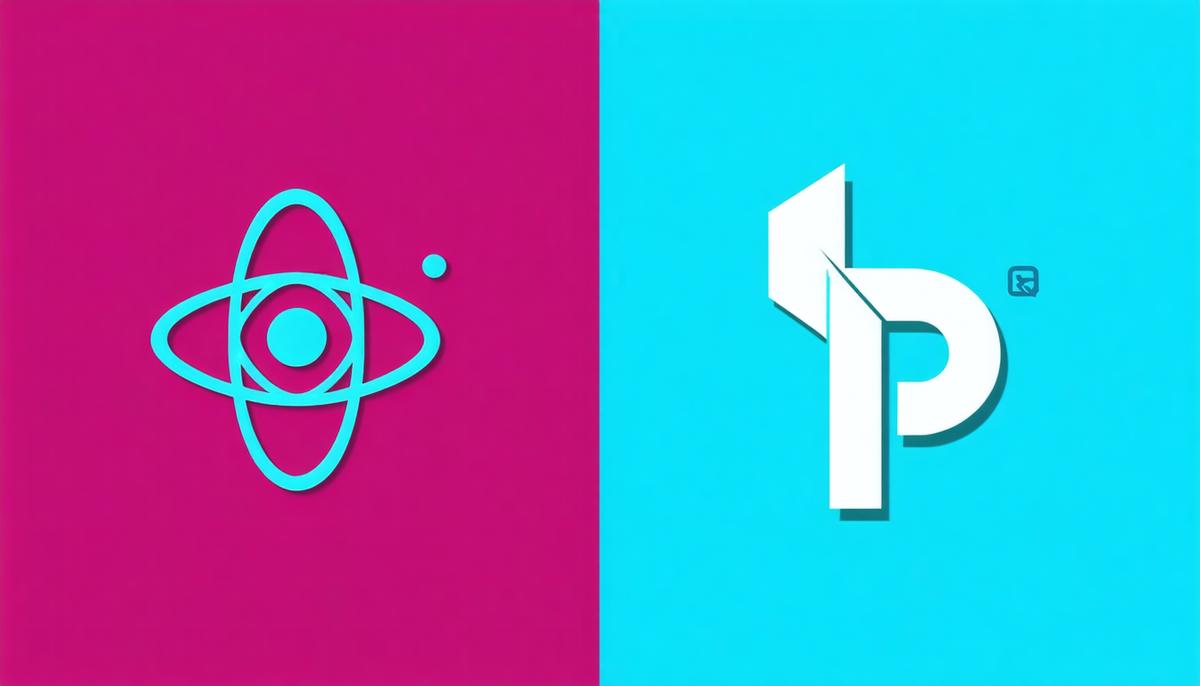Overview of React and Preact
React, created by Facebook in 2013, revolutionized UI development with its component-based architecture and virtual DOM. Preact, on the other hand, offers a similar API but in a significantly smaller package, weighing only 3KB gzipped.
Both libraries utilize JSX syntax, combining HTML elements with JavaScript. Components serve as reusable building blocks, with lifecycle methods and hooks like useState providing control over code execution. While React’s ecosystem has grown extensively, Preact prioritizes performance while maintaining much of React’s structure.
Key differences include:
- Preact uses native addEventListener calls instead of synthetic events
- Preact Compat helps developers use React libraries with minimal adjustments
- Both support server-side rendering (SSR), benefiting SEO-focused web apps
- React offers smoother lazy-loading of components, an area where Preact is improving
Hooks differ slightly, with Preact storing them separately to reduce size. Preact requires importing from preact/hooks or preact/compat, while React includes everything in one package.
React’s community and ecosystem are significantly larger, backed by Facebook and used by major companies. However, Preact’s efficiency appeals to performance-focused applications like Uber and the Financial Times.
Preact has unique features, such as allowing props and state arguments directly in the render method and supporting native HTML attribute names like class. It also simplifies SVG support.
Performance and Size
Preact excels in minimizing size and maximizing speed. At roughly 3KB, it’s significantly smaller than React with ReactDOM, which is about 45KB after compression. This size difference impacts load times, especially for users with slower internet connections.
Preact’s rendering speed outpaces React due to its leaner virtual DOM implementation and lack of synthetic events. This makes Preact ideal for applications prioritizing performance, particularly on lower-end devices.
Memory usage is another area where Preact shines, thanks to its compact design. This results in:
- Faster execution
- Reduced strain on device resources
- Enhanced stability in constrained environments like mobile devices or smart appliances
For web applications where speed and efficiency are crucial, such as Progressive Web Apps or sites with global reach, Preact is a strong contender. However, React’s widespread adoption provides access to numerous tested libraries and extensive support from Facebook.
The choice between Preact and React involves considering project scope, performance requirements, and development timelines, rather than just size or speed.
Ecosystem and Compatibility
React’s ecosystem is vast, offering numerous libraries, tools, and support options. It provides a wide range of third-party libraries for various functions, from state management to UI components. This extensive selection makes React a popular choice for teams building complex applications with diverse feature requirements.
Preact, while smaller, has been gaining traction. Its Preact Compat layer allows developers to use most React components and libraries without significant code changes. This compatibility bridges the gap between Preact’s lightweight core and React’s extensive ecosystem.
However, Preact users may occasionally encounter compatibility issues with React libraries that rely on specific internal features. These situations might require closer examination or adjustments to ensure smooth operation.
Integrating third-party tools with Preact is usually straightforward, especially with Preact Compat. As Preact’s ecosystem grows, any remaining compatibility hurdles are being addressed by its community through innovative solutions and compatible libraries.
The choice between React and Preact involves weighing React’s comprehensive library support against Preact’s efficient compatibility layer.
Use Cases and Suitability
Selecting React or Preact depends on evaluating your project’s specific requirements, complexity, and performance goals. React excels in scenarios involving intricate state management and extensive components. Major tech companies use React to create large-scale web applications with numerous interactive elements and high user demands.
Preact is optimal for situations prioritizing speed and responsiveness, especially in resource-constrained environments. It’s well-suited for:
- Progressive Web Apps (PWAs) that need rapid loading
- Lightweight applications targeting markets with variable connectivity
For medium-sized applications with moderate complexity and quick development needs, Preact offers an agile alternative. Its small size facilitates fast deployments and easy maintenance while maintaining compatibility with React’s ecosystem through Preact Compat.
The decision also involves considering:
- Organizational familiarity
- Available resources
- Development team’s skills
Teams focused on performance might prefer Preact, while those needing a full suite of tools might choose React despite its larger size.
Success ultimately depends on how well the chosen library meets your application’s needs and your team’s ability to utilize it effectively.
Development Experience
React provides various tools supporting an efficient workflow. Its DevTools extensions, comprehensive API, and extensive documentation create a supportive environment for both new and experienced developers. React’s well-documented syntax and architecture, along with abundant community resources, make it accessible to most developers.
React’s JSX syntax integrates HTML and JavaScript seamlessly, resulting in code that’s easy to read and understand. This approach appeals to developers who value clear, structured coding practices.
Preact maintains this syntactical familiarity, offering similar components and lifecycle methods. Developers transitioning from React will find Preact comfortable, requiring minimal adjustment in component creation and state management approaches.
React’s learning curve is generally gradual. Its extensive ecosystem covers various aspects, from basic component-based architecture to advanced state management solutions like Redux.
Preact appeals to those seeking a more concise version of the React experience. It’s particularly suitable for:
- Projects prioritizing performance over extensive features
- Teams with strong JavaScript skills
React naturally offers more extensive developer tools due to its maturity and widespread use. Preact, while more limited in scope, focuses on essential functionality. It integrates well with modern build tools and can be enhanced with the preact/debug package, which replicates some of React’s introspective capabilities.
The choice between React and Preact depends on balancing learning investment with speed requirements. Understanding your team’s strengths and project requirements is crucial in making this decision.

Selecting React or Preact requires careful consideration of your project’s needs. React provides a comprehensive toolkit for complex applications, while Preact offers a lightweight option focused on performance. The decision should align these tools with your development objectives and team expertise.
- Facebook. React: A JavaScript library for building user interfaces. 2013.
- Preact. Preact: Fast 3kB alternative to React with the same modern API. 2015.
- Stack Overflow. Developer Survey Results 2021.
- Uber Engineering. Building m.uber: Engineering a High-Performance Web App for the Global Market. 2017.
- Financial Times. FT.com: Building a high performance, load-tested, globally distributed news platform. 2016.
Vue vs React: A Comprehensive Comparison
Vue.js: A Comprehensive Guide to Modern Front-End Development
Arsalan Malik is a passionate Software Engineer and the Founder of Makemychance.com. A proud CDAC-qualified developer, Arsalan specializes in full-stack web development, with expertise in technologies like Node.js, PHP, WordPress, React, and modern CSS frameworks.
He actively shares his knowledge and insights with the developer community on platforms like Dev.to and engages with professionals worldwide through LinkedIn.
Arsalan believes in building real-world projects that not only solve problems but also educate and empower users. His mission is to make technology simple, accessible, and impactful for everyone.



